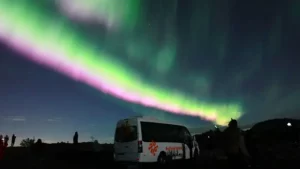Warning: Undefined variable $starting_point in /var/www/virtual/aurorareykjavik.is/htdocs/wp-content/themes/Divi/custom/functions.php on line 585
Warning: Undefined variable $duration in /var/www/virtual/aurorareykjavik.is/htdocs/wp-content/themes/Divi/custom/functions.php on line 592
Warning: Undefined variable $accommodation in /var/www/virtual/aurorareykjavik.is/htdocs/wp-content/themes/Divi/custom/functions.php on line 599
Warning: Undefined variable $difficulty in /var/www/virtual/aurorareykjavik.is/htdocs/wp-content/themes/Divi/custom/functions.php on line 606
Warning: Undefined variable $live_tour_guide in /var/www/virtual/aurorareykjavik.is/htdocs/wp-content/themes/Divi/custom/functions.php on line 615
Warning: Undefined variable $group_size in /var/www/virtual/aurorareykjavik.is/htdocs/wp-content/themes/Divi/custom/functions.php on line 622
Warning: Undefined variable $minimum_age in /var/www/virtual/aurorareykjavik.is/htdocs/wp-content/themes/Divi/custom/functions.php on line 629
Warning: Undefined variable $availability in /var/www/virtual/aurorareykjavik.is/htdocs/wp-content/themes/Divi/custom/functions.php on line 636
Warning: Undefined variable $starting_point in /var/www/virtual/aurorareykjavik.is/htdocs/wp-content/themes/Divi/custom/functions.php on line 648
Warning: Undefined variable $duration in /var/www/virtual/aurorareykjavik.is/htdocs/wp-content/themes/Divi/custom/functions.php on line 655
Warning: Undefined variable $accommodation in /var/www/virtual/aurorareykjavik.is/htdocs/wp-content/themes/Divi/custom/functions.php on line 662
Warning: Undefined variable $difficulty in /var/www/virtual/aurorareykjavik.is/htdocs/wp-content/themes/Divi/custom/functions.php on line 669
Warning: Undefined variable $live_tour_guide in /var/www/virtual/aurorareykjavik.is/htdocs/wp-content/themes/Divi/custom/functions.php on line 680
Warning: Undefined variable $group_size in /var/www/virtual/aurorareykjavik.is/htdocs/wp-content/themes/Divi/custom/functions.php on line 687
Warning: Undefined variable $minimum_age in /var/www/virtual/aurorareykjavik.is/htdocs/wp-content/themes/Divi/custom/functions.php on line 694
Warning: Undefined variable $availability in /var/www/virtual/aurorareykjavik.is/htdocs/wp-content/themes/Divi/custom/functions.php on line 701

Start

Dauer
~ hours

Übernachtungen
~ hours

Schwierigkeit

Sprache

Gruppengrösse

Mindestalter
years

Findet statt:

Start

Dauer
~ hours

Übernachtungen
~ hours

Schwierigkeit

Sprache

Gruppengrösse

Mindestalter
years

Findet statt:
Informationen zur Tour
Tourbeschreibung
BEWERTUNGEN VON REISENDEN
Warum bei uns buchen?
Einfache Stornierung
Tripadvisor Traveler’s Choice
Keine Buchungsgebühren
Bestpreisgarantie
Sichere Zahlung
Buche deine Tour hier
GOOD TO KNOW
FAQs
What to Bring
Cancellation Policy
Unsere Bestseller

Nordlicht-Tour mit einem Superjeep
4.9
Chase the Northern Lights with the experts with our Superjeep tour. Small group experience, wilderness-ready vehicles, and highest success rate. Book now!

Kombo-Tour: Südküste und Nordlichter
5
Explore Iceland’s South Coast and hunt the Northern Lights on this epic combo tour. Adventure awaits. Book your place today!

Nordlicht-Minibus-Tour
5
Join a small group for an immersive Northern Lights experience. Expert guides and unforgettable views await. Book your adventure today!
